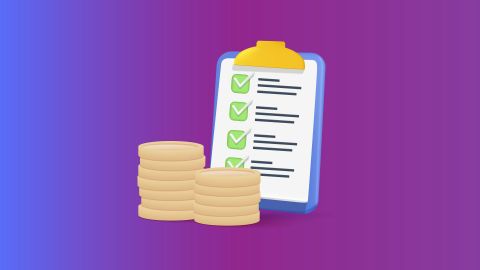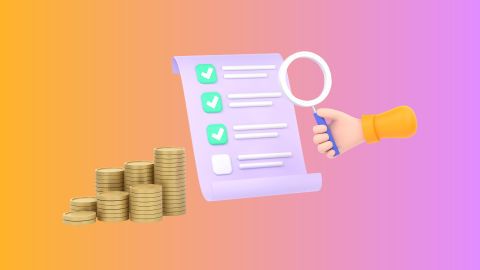The formalisation of tax collection took place in 1922, with the first rendition of the Income Tax Act. However, the system has evolved since then and today the country follows the stipulations of the Income Tax Act of 1961.
Overview of tax in India
Who levies taxes in India?
In India, there are three main bodies that have been given the responsibility of collecting taxes. They are as follows.
- Central government: The central government collects taxes such as income tax and capital gains tax
- State government: Taxes such as professional tax, and agriculture tax fall under the purview of the state government
- Local civic bodies: Local civic bodies collect property tax, water tax and other such smaller taxes
Government bodies that oversee taxation in India
While the government collects taxes at 3 levels, there are a few bodies that have been put in place to ensure that tax collection is a smooth process and that the system is in line with other goals and policies.
- Central Board of Direct Taxes: Also known as CBDT, the Central Board of Direct Taxes is an integral division of the revenue department under the Ministry of Finance. Its role is to plan taxation and institute policies. In addition, the CBDT aids the tax department in the implementation of direct taxes. With the onset of GST, CBDT was renamed to Central Board of Indirect Taxes and Customs (CBIC). Now, it deals with policy-making and implementation of GST
- Central Board of Excise and Customs: Much like CBDT, CBEC deals with forming policies and collection of customs and central excise duties
Corporate tax in India
What is corporate tax?
As per the Companies Act of 1956, companies, both private and public, have to pay corporation tax. It is calculated on the net income of the company.
How much corporate tax do you have to pay?
As a company owner, if your turnover is less than Rs. 250 crores, you have to pay 25% as corporate tax in India as per Budget 2018–19. Earlier, as per Budget 2017–2018, only companies with a turnover of less than Rs. 50 crore could enjoy this benefit.
Finance Minister Arun Jaitley implemented this in an effort to provide tax relief to 99% Indian companies that are micro, small and medium in size. This will allow them to reinvest a larger portion of their profits and create more jobs. On the other hand, companies with a turnover greater than Rs. 250 crore have to continue to pay 30% as corporate tax.
How to pay corporate tax?
You can pay corporate tax online at your convenience. In fact, the challan for corporate and income tax is the same—Challan 280. Either visit the TIN-NSDL website and look for ‘e-payment of taxes online’ or simply click here to get started. Under the ‘Tax Applicable’ field, make sure to check the first option, which is ‘(0020) Corporation Tax (Companies)’. Once you fill the necessary details you can pay via netbanking or by using your debit card.
What are the types of taxes that a salaried individual must pay?
Broadly, there are two types of taxes in India:direct and indirect taxes. Besides these two, the government may also levy taxes for specific reasons. Take a look at what each type means.
Direct taxes:
The government levies these taxes directly on individuals. You can’t transfer the payment of these taxes to another individual. Income tax, capital gains tax and securities transaction tax are direct taxes examples.
Income tax, which you have to pay as per the tax bracket you fall under, is the most commonly known example of direct tax. Here’s a look at the income tax slab, if you are less than 60 years of age.
- Income up to Rs. 2,50,000 is tax-free
- Income ranging from Rs. 2,50,000 to Rs. 5 lakh is taxed at 5%
- Income ranging from Rs. 5 lakh to Rs. 10 lakh is taxed at 20%
- Income of more than Rs. 10 lakh is taxed at 30%
Indirect taxes:
The government levied these taxes through the cost of goods and services. Indirect taxes included service tax, Value-Added Tax (VAT), customs duty, etc.
However, since July 1, 2017, the Government of India has done away with indirect taxes, replacing several taxes with one tax, known as the Goods and Services Tax or GST. This is a multi-stage, destination-based system.
Other taxes: The government may also levy a special tax from time to time to finance specific causes that the central government is focussing on. In recent times, you will have noticed paying Swachh Bharat Cess Tax and Krishi Kalyan Cess Tax, which are examples of this.
How to calculate income tax for a salaried person?
You can make use of an income tax calculator to calculate your tax payment with ease. In fact, the Income Tax department provides you with this handy tool on its website.
How to make online tax payment
- Individuals and corporates have to pay income tax using the same form: Challan 280. You can click here to access it and get started
- First, under ‘Tax Applicable’ select the second option, which is ‘(0021)Income Tax (other than companies)’
- Next, fill in your PAN and select an assessment year.
- Enter your personal information including your address, email ID and mobile number
- Then select the type of payment, for example, self-assessment tax.
- Choose your mode of payment
- Enter the Captcha code and click on ‘Proceed’
- You will be able to view a challan with your CIN, payment details and the name of your bank. It is best to print and save this
What taxes do self-employed professionals need to pay?
As a self-employed professional, you have to pay tax just like everyone else. However, you can make use of presumptive taxation to reduce your tax obligation if you are eligible.
What is presumptive taxation?
The IT department instructs all businesses and professionals to maintain financial records. Besides this, it insists that you get your books audited if your income exceeds Rs. 50 lakh if you are a professional, and Rs. 1 crore if you are a business.
However, if as a self-employed professional, you make less than Rs. 50 lakh, you can make use of presumptive taxation as per Section 44ADA. Under this system, you don’t have to deduct expenses from your total receipts and then pay tax on the balance amount. Instead, a percentage of your receipts is considered as be your net income and you have to pay tax on this.
Who can make use of presumptive taxation?
If your profession is one of the following, you can make use of presumptive taxation. - Doctor - Accountant - Engineer - Lawyer - Architect - Technical consultant - Interior decorator. If your gross receipts for a financial year are under Rs. 50 lakh, your taxable income will be considered as 50% of your gross receipts.
Why should you choose presumptive taxation?
Opting for presumptive taxation offers 2 key benefits:
- You don’t have to maintain books of accounts. - You don’t have to get your accounts audited
However, if your profits/ gains are less than 50%, you must maintain books of accounts, with records for expenses, and have them audited. Then, you can use this as proof to establish your case.
The best ways to get tax benefits
In order to reduce your tax obligation, the government provides you with certain tax benefits. Essentially, these are deductions that you can claim against specific expenses. Take a look at a few tax benefits that allow you to hold on to a greater portion of your income.
Under Section 80C, Section 80CCC and Section 80CCD
These three sections cater to deductions that you can avail when you invest in certain instruments. In total, you can claim up to Rs. 1.5 lakh under these sections. Some of the instruments that fall under these three sections include National Savings Certificate, contribution to Employee Provident Fund, Public Provident Fund and pension plans.
Under Section 80D, Section 80DD and Section 80DDB
These sections deal with expenses made towards your health your dependents’. Under Section 80D you can claim up to Rs. 25,000 for insuring yourself, your spouse and your children. If you pay your parents’ insurance premium, you can claim an extra Rs. 25,000 if they are under 60 years of age. If they are older, you can claim Rs. 50,000 instead. Under Section 80DD, you can claim a deduction if you have spent money on rehabilitating or treating a handicapped individual. For disabilities ranging from 40% to 80%, you can claim Rs. 75,000 and for disabilities greater than 80% you can avail a deduction of Rs. 1.25 lakh. Finally, under Section 80DDB, you can claim up to Rs. 40,000 for your or your dependent’s medical treatment. For senior citizens, the amount is Rs. 1 lakh.
Using a home loan
Taking a home loan is another nifty way of reducing your tax obligation. In total, you can claim deductions under 3 sections: Section 80C, Section 24 and Section 80EE. Section 80C pertains to a deduction on the principal amount, Section 24 allows you to claim up to Rs. 2 lakh on the interest payment, whereas Section 80EE gives first-timer homebuyers an extra deduction of Rs. 50,000 on interest payments.
Using a business loan
Visit the official website to see all the deductions that the Income Tax department offers you.
Introduction of GST and how has it has changed taxation
In July 2017, the Government of India introduced a new form of taxation called GST or Goods and Services Tax. It combines multiple indirect taxes that you pay on goods and services and streamlines the taxation system with slabs of 5%, 12%, 18%, and 28%.
What taxes has GST replaced?
Here are taxes that fall under the centre that GST has replaced:
- Central Excise Duty
- Additional Excise Duty
- Special Additional Duties of Customs
- Service Tax
- Additional Customs Duty or Countervailing Duty
Here are taxes that fall under the state that GST has replaced:
- State Value Added Tax
- Central Sales Tax
- Luxury Tax
- Octroi and Entry Tax
- Entertainment and Amusement Tax
- Taxon advertisements
- Purchase Tax
- Taxes on lottery, betting and gambling
- State surcharges and cesses that relate to goods and services
Why is GST considered to be beneficial?
- It has made filing taxes simpler
- It is likely to give the nation’s revenue and GDP a boost
- It will promote transparency and efficiency, thereby protecting the country from tax fraud
- It has increased the affordability of certain goods and services
Understanding the country’s tax system and the reason behind why you have to pay income tax will help you ensure that you pay your dues on time. Besides, with information on benefits and deductions, you will also be able to plan your taxes better.
DISCLAIMER:
While care is taken to update the information, products, and services included in or available on our website and related platforms/websites, there may be inadvertent inaccuracies or typographical errors or delays in updating the information. The material contained in this site, and on associated web pages, is for reference and general information purpose and the details mentioned in the respective product/service document shall prevail in case of any inconsistency. Subscribers and users should seek professional advice before acting on the basis of the information contained herein. Please take an informed decision with respect to any product or service after going through the relevant product/service document and applicable terms and conditions. In case any inconsistencies observed, please click on reach us.
*Terms and conditions apply







